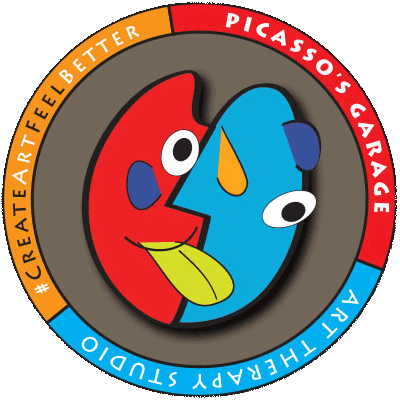THERAPY GOALS FOR CoD
Increase the child's understanding of the divorce and parental separation and help her process her feelings related to these changes.
Develop coping skills for managing difficult emotions such as sadness, anger, anxiety, and confusion.
Improve communication skills by teaching her how to express her emotions in a healthy and appropriate way, both verbally and non-verbally.
Encourage self-esteem, positive self-talk, and mindfulness activities to promote healthy emotional regulation, which will provide the child with tools to feel in control of their thoughts and feelings.
Help the child with establishing healthy boundaries associated with their individual feelings while recognizing the importance to respect others' perceptions.
Foster trust and better communication between the child and parents, making them feel safe to discuss their concerns, needs, and feelings.
Encourage healthy interactions with both parents instead of just one or none. Also promote a healthy relationship-building between the new partnerships present in each separated parent's life.
Assist in maintaining healthy routines and activities within the child's life to manage stress levels.
Encourage play interventions to teach problem-solving strategies, positive social interactions, relaxation techniques that the child can use during times of stress outside of therapy.
Support emotionally stable transitions throughout visits if co-parenting is involved with both parents in a loving and motivating way.
TOP CONCERNS KIDS HAVE DURING PARENTAL SEPARATION AND DIVORCE
• Anxiety that parents will “disappear”
• Feelings of INVISIBILITY
• Worries about the future
• Worries about money
• Anxiety about divided loyalties
• Concerns about parent’s well-being
• FEAR of losing parental love
• Hopes for reconciliation
• Shielding parents from troubled feelings
Key aspects of this intervention aim to improve outcomes for children of divorce they include; instilling hope, correcting misinformation and misdirected blame, disengaging from conflict, and improving temperment through managing loss and depression, understanding origins of anger and establishing a safe space.
CREATE TO THRIVE DURING FAMILY DIVIDE is the resulting program from my thesis on Children of Divorce. The impact of parental divorce and the surrounding pre- and post-parental conflict contributes to a variety of issues for the children of these families. A review of the impacts of divorce on children, as well as current theories and interventions found to be effective for children who have experienced hardship, provided the framework for the rationale of the proposed program design. In an effort to improve outcomes for children of divorce, I identified several areas of focus to be addressed in an art therapy intervention. These areas of focus were selected based on research on the collective experience of children following parental divorce, current therapeutic interventions for children, resiliency-building approaches, and effective art therapy approaches, group therapy approaches, and school-based interventions. I published my thesis as opensource allowing free acces for Mental Health Professionals and peers, parents ,teachers and caregivers, visit researchgate for full text version.
excerpt from published thesis...
SUMMARY OF FINDINGS
The collected findings from the literature review reveal that children are negatively impacted by parental divorce, showing internalized and externalized effects resulting in deficits in school performance, social interactions and personal relationships later in life. To compound these troubles, this crisis for children occurs when their primary caregivers are struggling with their own experience of adjustment related to loss of a partner, financial implications and managing changing family dynamics. Most experts in the field agree that children experience a period of adjustment lasting approximately two years and rationalize that findings inconsistent with this conclusion have resulted from the use of data that do not account for the impact of parental conflict which may commence years prior to separation (Amato, 2010; Luther, 2003). An early prevention approach for this population is desirable because resiliency research shows that many factors contribute to improved resiliency of children, which can be nurtured or taught through an emphasis on positive goals and achievement. Studies have demonstrated that support provided during this period alleviates some of the struggles experienced by children of divorce, and will also help to identify the small percentage of children who are vulnerable to experiencing long-term negative effects (Chang & Kier, 2016).
THEORETICAL FRAMEWORK
The impact of parental divorce and the surrounding pre- and post-parental conflict contributes to a variety of issues for the children of these families. A review of the impacts of divorce on children, as well as current theories and interventions found to be effective for children who have experienced hardship, provided the framework for the rationale of the proposed program design. In an effort to improve outcomes for children of divorce, I identified several areas of focus to be addressed in an art therapy intervention. These areas of focus were selected based on research on the collective experience of children following parental divorce, current therapeutic interventions for children, resiliency-building approaches, and effective art therapy approaches, group therapy approaches, and school-based interventions. Key aspects of the intervention that aim to improve outcomes for children of divorce include instilling hope, correcting misinformation and misdirected blame, disengaging from conflict, and improving temperament through managing loss and depression, understanding origins of anger, and establishing a safe space. The proposed program is based on my interpretation of the data presented in the literature review. Jungian archetypes, Wallerstein’s six tasks, promoting resiliency, humanistic art therapy and the use of the Superhero metaphor were considered in the design of each art directive and weekly treatment focus that make up the art therapy intervention.
